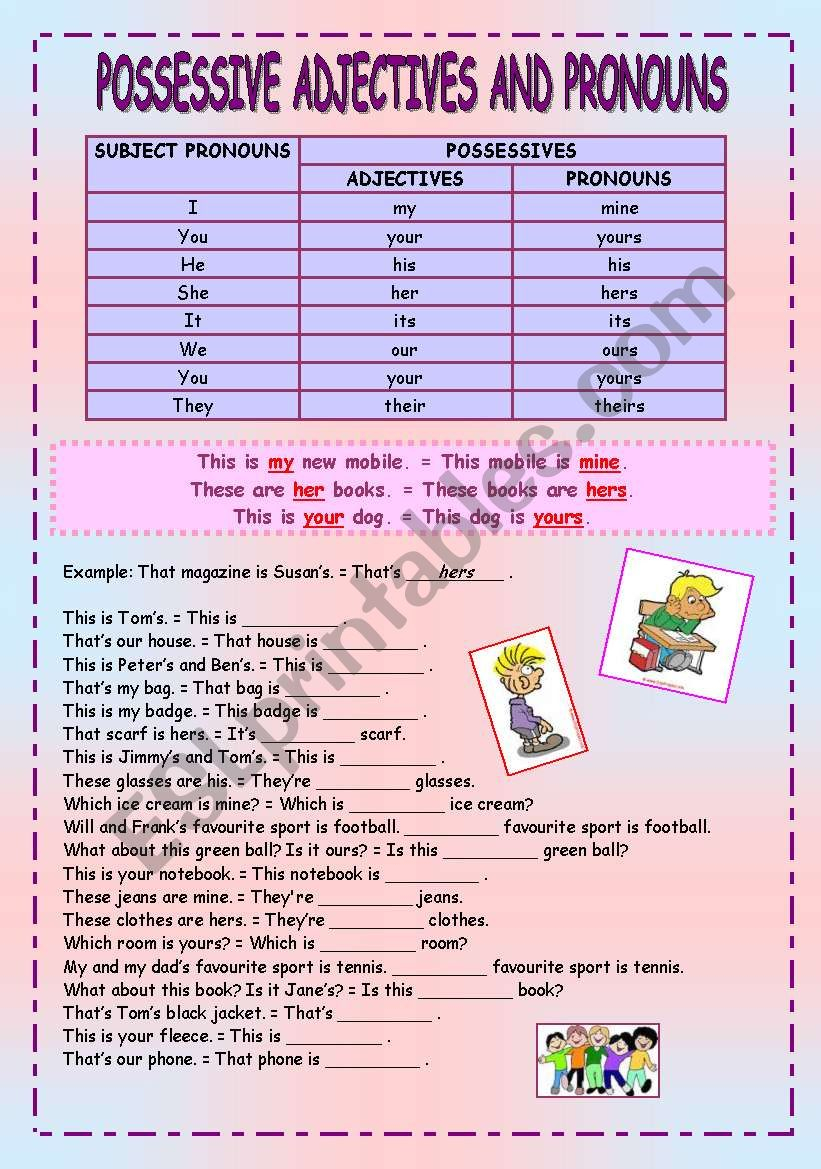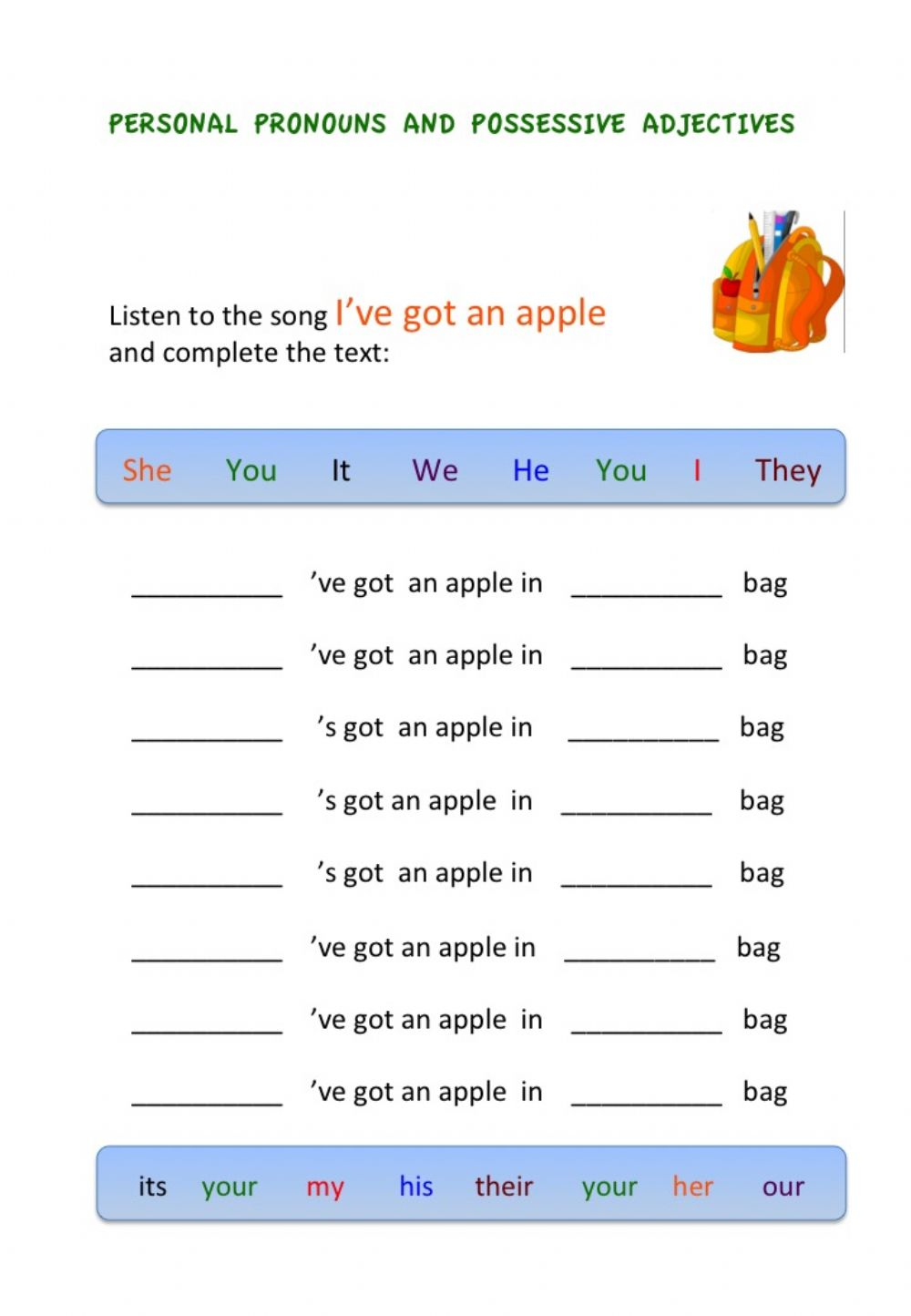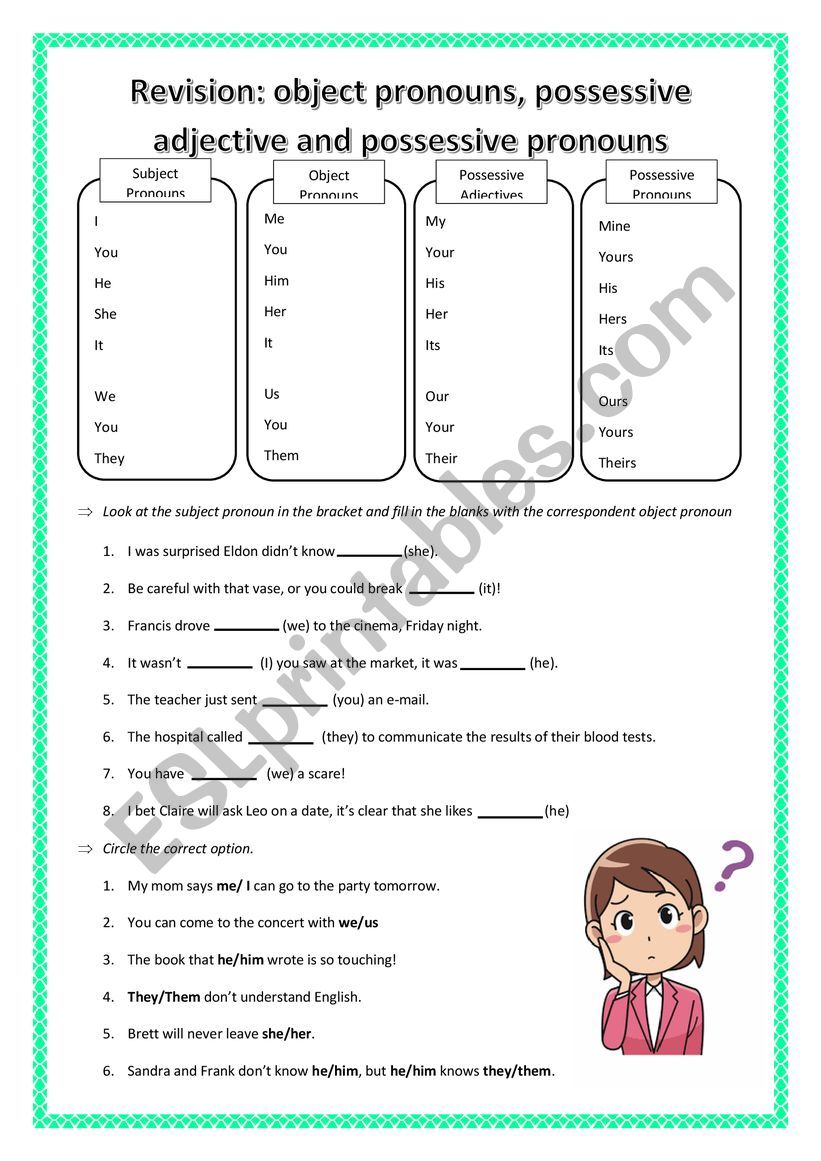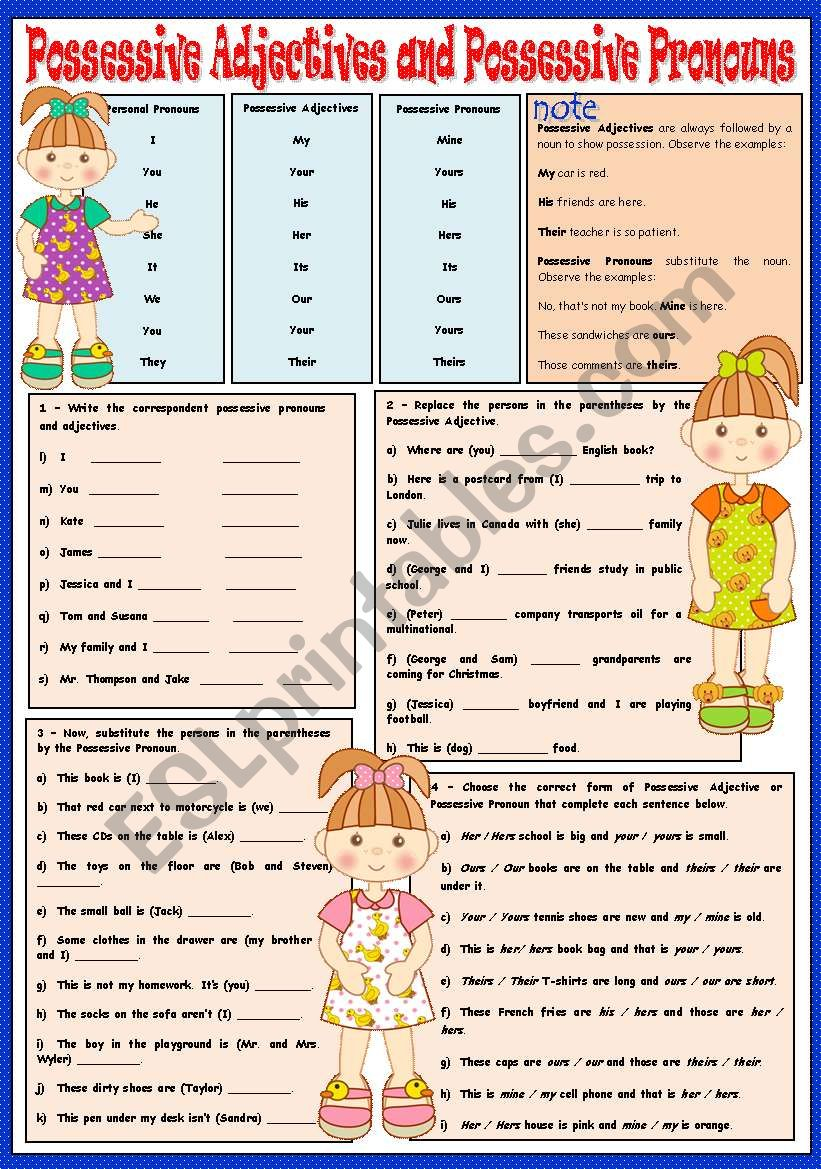
Adjectives vs. Pronouns: A Comprehensive Guide to Mastering the Distinction Through Worksheets
English grammar, with its intricate rules and nuanced distinctions, often presents a formidable challenge to learners. Among the many grammatical concepts, distinguishing between adjectives and pronouns can be particularly perplexing. Both are essential parts of speech, yet they serve fundamentally different roles in a sentence. While an adjective modifies a noun or pronoun, providing more information about it, a pronoun replaces a noun, preventing repetition. The core of mastering this distinction often lies in hands-on practice, particularly through a well-designed adjectives vs. pronouns worksheet.
This article will delve into the definitions, functions, and common points of confusion between adjectives and pronouns, highlighting how an effective adjectives vs. pronouns worksheet can solidify your grasp of these vital grammatical elements. We will explore the types of exercises found in such worksheets and provide strategies for both learners and educators to maximize their utility.

Understanding Adjectives: The Describers

Adjectives are words that describe, identify, or quantify nouns or pronouns. They add detail, color, and specificity to our language, making sentences richer and more informative. Think of them as modifiers that answer questions like "Which one?", "What kind?", or "How many?"

Key Characteristics of Adjectives:

- Modify Nouns or Pronouns: This is their primary function.
- The red car. (modifies ‘car’)
- She is beautiful. (modifies ‘she’)
- Provide Information: They give details about size, color, shape, age, origin, material, and more.
- A large, wooden table.
- The old man.


- Can Appear Before or After the Noun:

- A tall building. (attributive adjective)
- The building is tall. (predicative adjective, follows a linking verb)


Types of Adjectives (Relevant to Confusion):
- Descriptive Adjectives: Most common, describe qualities (e.g., happy, cold, bright).
- Possessive Adjectives: Show ownership and always come before a noun (e.g., my, your, his, her, its, our, their). This group is a major source of confusion with possessive pronouns.
- This is my book.
- Demonstrative Adjectives: Point out specific nouns and always come before a noun (e.g., this, that, these, those). Another common point of confusion.
- This car is fast.
- Interrogative Adjectives: Used in questions, modifying a noun (e.g., which, what, whose).
- Whose pen is this?
- Indefinite Adjectives: Refer to non-specific nouns (e.g., some, any, many, few, all, no).
- We have some apples.
Understanding Pronouns: The Replacers
Pronouns are words that stand in for nouns or noun phrases. Their main purpose is to avoid repetitive noun usage, making sentences more concise and fluent.
Key Characteristics of Pronouns:
- Replace Nouns: They act as substitutes for nouns that have already been mentioned or are clear from the context.
- John went to the store. He bought milk. (‘He’ replaces ‘John’)
- Refer to an Antecedent: The noun that a pronoun replaces is called its antecedent.
- Sarah loves books; she reads every day. (‘Sarah’ is the antecedent of ‘she’)
- Can Function as Subjects or Objects:
- She is here. (Subject)
- I saw him. (Object)
Types of Pronouns (Relevant to Confusion):
- Personal Pronouns: Refer to specific people or things (e.g., I, you, he, she, it, we, they, me, him, her, us, them).
- Possessive Pronouns: Show ownership but stand alone, not modifying a noun (e.g., mine, yours, his, hers, its, ours, theirs). This is the counterpart to possessive adjectives.
- That book is mine.
- Demonstrative Pronouns: Point out specific things but stand alone (e.g., this, that, these, those). This is the counterpart to demonstrative adjectives.
- This is my favorite color.
- Interrogative Pronouns: Used to ask questions, standing in for the answer (e.g., who, whom, whose, which, what).
- Who is at the door?
- Indefinite Pronouns: Refer to non-specific people or things (e.g., someone, anything, everyone, nothing).
- Everyone is here.
The Fundamental Distinction: Modify vs. Replace
The most critical difference, and the one that an adjectives vs. pronouns worksheet should primarily reinforce, is their function:
- Adjectives Modify: They always accompany a noun (or pronoun) to describe it. They cannot stand alone as the subject or object of a sentence.
- Pronouns Replace: They stand in for a noun, acting as the subject or object of a sentence, or as the object of a preposition. They can stand alone.
Why the Confusion Arises: The Tricky Overlaps
The main reason learners struggle to differentiate is that some words can function as both adjectives and pronouns, depending on their usage in a sentence. These are primarily:
-
Possessive Forms:
- Possessive Adjectives: my, your, his, her, its, our, their (always followed by a noun).
- This is my coat. (My modifies ‘coat’)
- Possessive Pronouns: mine, yours, his, hers, its, ours, theirs (stand alone, replacing a noun phrase).
- This coat is mine. (Mine replaces ‘my coat’)
- Note: ‘His’ and ‘its’ can be both, but their function (modifying vs. replacing) remains key. "His car" (adj) vs. "The car is his" (pronoun).
- Possessive Adjectives: my, your, his, her, its, our, their (always followed by a noun).
-
Demonstrative Forms:
- Demonstrative Adjectives: this, that, these, those (always followed by a noun).
- That book is interesting. (That modifies ‘book’)
- Demonstrative Pronouns: this, that, these, those (stand alone, replacing a noun).
- That is an interesting book. (That replaces ‘that book’ or ‘the book’)
- Demonstrative Adjectives: this, that, these, those (always followed by a noun).
-
Interrogative Forms:
- Interrogative Adjectives: which, what, whose (followed by a noun, asking about it).
- Which color do you prefer? (Which modifies ‘color’)
- Interrogative Pronouns: who, whom, whose, which, what (stand alone, asking a question about something).
- Which is your favorite color? (Which replaces ‘your favorite color’)
- Interrogative Adjectives: which, what, whose (followed by a noun, asking about it).
-
Indefinite Forms:
- Indefinite Adjectives: some, any, no, many, few, all, several, etc. (followed by a noun).
- We have some bread. (Some modifies ‘bread’)
- Indefinite Pronouns: someone, anyone, no one, everybody, nothing, etc. (stand alone).
- We need some. (Some replaces ‘some bread’ or ‘some amount’)
- Indefinite Adjectives: some, any, no, many, few, all, several, etc. (followed by a noun).
Designing and Utilizing an Effective Adjectives vs. Pronouns Worksheet
A carefully constructed adjectives vs. pronouns worksheet serves as an invaluable tool for both learners and educators. It provides structured practice that moves beyond rote memorization, encouraging critical thinking about context and function.
Key Components of a Comprehensive Worksheet:
-
Identification Exercises:
- Task: Present sentences and ask learners to identify whether highlighted or underlined words are adjectives or pronouns.
- Example:
- This is my favorite song. (Adjective)
- That is a beautiful painting. (Pronoun)
- I saw her yesterday. (Pronoun)
- She has a beautiful voice. (Adjective)
- Benefit: Builds foundational recognition skills.
-
Fill-in-the-Blanks:
- Task: Provide sentences with blanks and a choice of words (e.g., my/mine, this/this, who/whose) for the learner to select the correct part of speech based on context.
- Example:
- Is this book __ (your/yours)?
- __ (That/That) car is parked illegally.
- __ (Who/Whose) jacket is this?
- Benefit: Forces learners to consider the word’s function within the sentence.
-
Sentence Construction/Transformation:
- Task: Ask learners to write sentences using a given word as both an adjective and a pronoun, or to rewrite sentences to change the function of a word.
- Example:
- Use ‘that’ as an adjective: ____ (That house is big.)
- Use ‘that’ as a pronoun: ____ (That is a big house.)
- Rewrite: "This is my dog." to use a possessive pronoun. (This dog is mine.*)
- Benefit: Develops active application and deeper understanding of how words change roles.
-
Error Correction:
- Task: Present sentences with common errors in adjective/pronoun usage and ask learners to identify and correct them.
- Example:
- The red car is my. (Incorrect) -> The red car is mine.
- Whose is the book on the table? (Incorrect, if ‘whose’ is meant to modify) -> Whose book is on the table?
- Benefit: Sharpens error detection skills and reinforces correct usage patterns.
-
Contextual Analysis/Paragraph Level:
- Task: Provide a short paragraph and ask learners to identify all adjectives and pronouns, explaining their function.
- Example: "My sister bought a new dress. She loved its vibrant color. That dress was truly beautiful. It was hers, and she wore it to the party." (Identify and label my, new, vibrant, that, beautiful, hers, it, she).
- Benefit: Encourages understanding in a more natural, extended context, mirroring real-world language use.
Maximizing the Benefits of an Adjectives vs. Pronouns Worksheet
To get the most out of an adjectives vs. pronouns worksheet, consider these tips for both learners and educators:
For Learners:
- Focus on Function, Not Just Form: Always ask yourself: "Is this word describing a noun, or is it standing in for one?" This is the golden rule.
- Look at the Surrounding Words: If a word is immediately followed by a noun it describes, it’s likely an adjective. If it stands alone or is followed by a verb, it’s likely a pronoun.
- Practice Regularly: Consistent exposure and application are key to solidifying understanding.
- Review Answers Carefully: Don’t just check if you’re right or wrong. Understand why an answer is correct or incorrect.
- Create Your Own Examples: Once you feel confident, try constructing sentences where the same word acts as both an adjective and a pronoun.
For Educators:
- Scaffold Learning: Start with simpler identification tasks before moving to more complex transformations or error corrections.
- Provide Clear Definitions and Examples: Before assigning a worksheet, ensure learners have a solid theoretical foundation.
- Emphasize the "Modify vs. Replace" Rule: This is the most crucial distinction to repeatedly highlight.
- Use Diverse Sentence Structures: Vary the complexity of sentences to challenge different levels of learners.
- Encourage Peer Teaching: Having students explain their reasoning to each other can deepen understanding.
- Offer Immediate Feedback: Timely correction and explanation are vital for effective learning.
- Integrate into Broader Writing Tasks: Encourage students to apply their knowledge of adjectives and pronouns in their own writing, focusing on clarity and avoiding repetition.
Conclusion
Mastering the distinction between adjectives and pronouns is a cornerstone of grammatical proficiency. While seemingly simple, the nuances of their usage, particularly with overlapping forms, can pose a significant challenge. A robust adjectives vs. pronouns worksheet isn’t just about memorization; it’s about fostering a deeper, intuitive understanding of how these essential parts of speech function within the English language. By engaging with targeted exercises, learners can build confidence, refine their analytical skills, and ultimately communicate with greater precision and clarity. Embrace the worksheet as your guide, and unlock the power of accurate adjective and pronoun usage in your linguistic journey.
